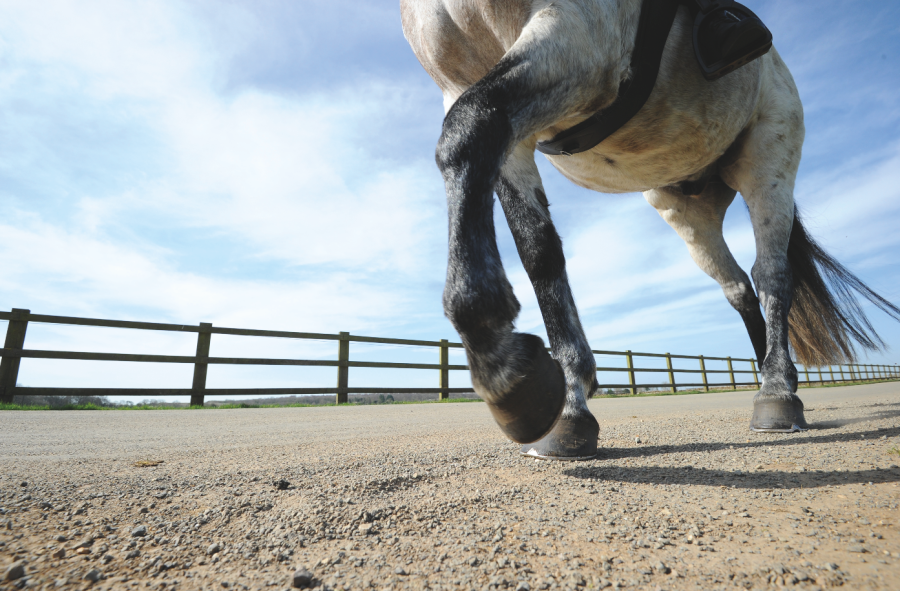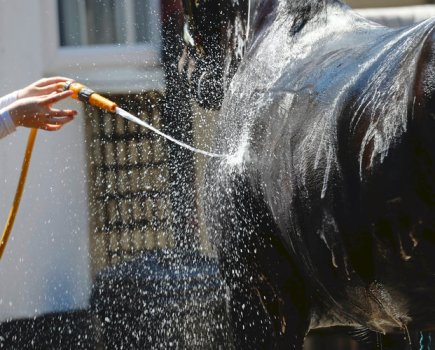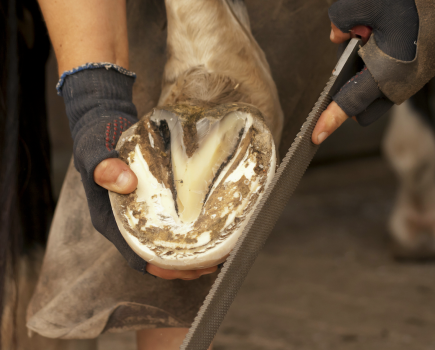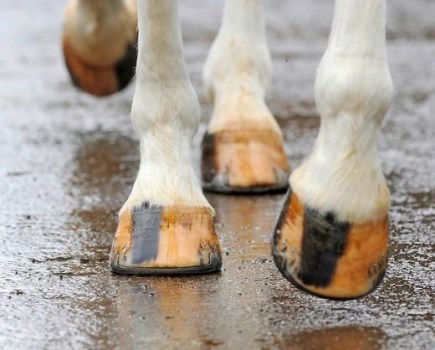Noticing that your horse has a swollen leg (or sometimes more than one) is something that most owners have experienced at one point or another. Some swellings are innocuous, while others are potentially a sign of something serious and could lead to a claim on your horse health insurance policy.
Either way, it can be a worrying time for horse owners and riders and it’s important to know how to deal with a swollen leg.
Possible causes
Heat and swelling in your horse’s legs are relatively common and there are several possible causes.
It may be something as simple as fluid build-up from standing in the stable for prolonged periods or could be more serious, such as a tendon injury.
If your horse’s leg (or several legs) are swollen there could be a number of causes, including:
- Long periods of confinement, such as standing still in a stable, after exercise.
- Not having enough freedom to move around in general
- Having too much protein in their diet
- Bruising
- Overexposure to moisture
- Overfeeding/obesity
- Trauma/ injury to the limb
- Infection
- Insect bite
- Scrapes/wounds
- Inflammation of the skin
- Inflammation of the tissue
- An allergic reaction
- Inflammation of the vessels
- Abscesses
How to assess a swollen leg
If you notice that your horse has swelling in a limb, the first thing to do is assess it to decide whether it requires veterinary attention by doing the following:
- Firstly, check the swelling by slowly running your hands over the swollen leg to feel for any heat and gently palpate the region to identify any tenderness.
- If your horse flinches in response to your touch or his skin feels warmer in these areas compared to elsewhere on his legs, they may be experiencing an acute inflammatory reaction.
- If neither heat nor pain accompanies your horse’s swelling, they probably have a non-acute condition, such as windgalls or filled legs.
- An acute swelling that’s warm and tender to the touch suggests a recent injury or a developing infection.
- With infection, the area may feel hot and be painful to touch, so it’s worth checking your horse’s temperature and look carefully for any wounds such as small puncture wounds or any cuts that are oozing.
- An acute or new swelling, especially if accompanied by heat and in just one leg or that is affecting a joint, is a reason to call your vet, as is swelling associated with lameness.
Types of swelling
Cellulitis
Also called septic cellulitis, cellulitis is a bacterial infection of the deeper layers of the skin. It can occur anywhere on the body, but in horses the infection commonly occurs in one of the hind legs.
Cellulitis typically starts with sudden swelling that is warm and painful to the touch. Veterinary attention is required.
Lymphangitis
Lymphangitis is inflammation of the lymph vessels most usually in the limbs and typically appears as a hot, painful, extremely swollen limb, usually the hind leg. Severe lymphangitis can be difficult to treat and requires veterinary attention.
Oedema
Oedema is an accumulation of lymphatic fluid under the skin that has settled to the lowest point of the body. They are usually painless and will disappear with increased circulation of the lymphatic system.
Strains
Sprains and strains involving tendons, ligaments or a joint capsule will often produce inflammation, pain, swelling and lameness, and require immediate veterinary attention.
Windgalls
Windgalls are residual inflammations from old tendon and ligament injuries. They usually occur on the back of the leg, at or just above fetlock level.
Windgalls normally occur on both hind legs, although they occasionally appear on just one leg and sometimes can also be found in the front legs. They are usually painless and will often disappear during exercise and movement.
Hoof abscess
Foot abscesses are associated with sudden onset severe lameness and often cause legs to fill due to the inflammatory processes occurring in the foot.
Your vet and/or farrier should be called out to locate and release the infection from the abscess, after which the foot should be poulticed to draw out any remaining infection.
Filled legs
Filled legs is the term used to describe a condition in which the length of a horse’s leg (more commonly the hind pair) appear swollen.
It’s often the result of the horse standing in his stable for longer than normal and not doing enough exercise. Once the horse has started moving, the swelling often dissipates.
Degenerative joint disease
DJD is the most common type of arthritis in horses. It is a chronic disease in which the cartilage on the ends of bones wears down, resulting in loss of joint mobility, swelling, heat and pain.
Arthritis
Arthritis is very common in horses, especially in the ageing population. It is a degenerative joint disease that causes pain and inflammation. Over time, the inflammation damages the cartilage within a joint beyond repair, leading to chronic pain.
What your vet will do
You should always call your vet about a swollen leg, particularly if you aren’t sure what the cause is or how serious it might potentially be.
The first thing your vet will do is ask you questions about your horse’s overall health, the signs of their condition and their severity, how long they have lasted, and any relevant medical history.
The vet will then perform a physical examination of your horse, assessing and feeling their legs and joints, and possibly watching the horse walk and trot in order to assess any lameness.
Your vet may also check your horse’s temperature and may opt to X-ray or scan your horse’s legs if injury or disease is likely.
In the case of wounds, it’s also worth telling your vet when your horse last had a tetanus shot.
Treating a swollen leg
For mild cases of swelling that have been assessed by your vet and aren’t linked to a specific injury or illness, the following treatments may be advised:
Cold water/ ice boots
Hosing your horse’s legs with cold water for up to 20 minutes will help to reduce any heat and inflammation while also offering a gentle massaging effect. Ice boots can also help to reduce heat and swelling — follow the manufacturer’s instructions for correct usage times.
Wounds
If the swelling and/ or heat is associated with a wound or abscess, your vet may want to clean and possibly stitch the wound, and drain, thoroughly clean and possibly poultice any abscess your horse may have.
Medication
In cases of cellulitis or lymphangitis, your vet may prescribe antibiotics to treat the infection. They may also prescribe anti-inflammatory medications for any pain and swelling.
Massage and bandaging
In order to improve the circulation and help any fluid dissipate, regular gentle massage can stimulate the circulation of blood in. your horse’s legs.
Support bandages can be applied overnight when the horse is stabled to help prevent fluid accumulation. Be careful, however, not to wrap the bandage unevenly or too tightly, which can damage tendons.
Always apply at least a one-inch thick layer of quilting underneath the wrap. If you are unsure of your bandaging skills, ask someone experienced for guidance.
Get your horse moving
Exercise, daily turnout, regular sessions on the horse walker and/or in-hand walking will all help to encourage any swelling to dissipate and prevent accumulation of fluid.
Basically, the more you can do to keep your horse moving — especially at times of year when they might be stabled for longer periods of time — the better.
Check your horse’s diet
Fat horses or those on a diet too high in protein can suffer from swollen limbs, so it’s worth speaking to your nutritionist to check your horse’s diet is appropriate for his condition and current workload.
Remember, it is in every horse, pony and donkey’s interests to be #FitNotFat, and every equine owner has a responsibility to their charges to help them remain in peak health.
Main image © Shutterstock








